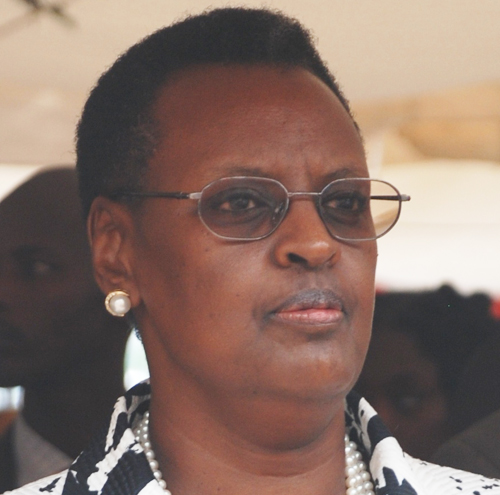
First Lady of Uganda Janet Museveni is convinced that the global reporting trend about women in Rwanda’s parliament is all wrong: she has her own figures.
In Q&A interview for Forbes magazine’s December issue, Janet Museveni was challenged on what was being done to increase women participation in Ugandan society. The interviewee made reference to Rwanda, and the First Lady’s reaction shows she was not happy with the comparison.
“Yes, we have a big percentage of women in politics. At least 33% members of Parliament are women, and in cabinet, it is 35%,” she said.
“But by and large, I think we have a huge percentage of women leaders now and considering our population, that also increases the number.”
She added: “Smaller countries like Rwanda have a big percentage in Parliament, but because their population is smaller, the numbers are not as big as those in Uganda.”
Essentially what Janet Museveni is saying is that the world data ranking countries has gotten it all wrong. Her argument is that Uganda has 447 lawmakers, of whom 135 are women.
Uganda’s population as of 2016 was 42million, compared to 11.7m in Rwanda.
But then Rwanda’s parliament has 80 seats of which 52 are women.
Sweden has one of the world’s highest representations of women in parliament. Sweden’s total population as of last year is estimated at 9.8million. After the 2014 election, 43.6 per cent (152) of the 349 seats were taken by women.
According to the World Economic Forum (WEF) Global Gender Gap Report 2017, which is the renowned ranking database, Rwanda’s figure of 64% makes it the highest ratio in the world.
The Inter-Parliamentary Union (IPU), a platform bringing together all law making bodies, only 3 African nations appear among top 10 ranking (see table). Nordic countries also feature strongly with Sweden, Finland and Iceland all making it into the top 10.
Going by the population of Uganda compared to all the “top 10” nations, the ratios do not match up. Uganda has a big population and it’s representation numbers are low.
Mathematically, there is no way, a parliament with 447 lawmakers and just 33% women, can be considered above a parliament of 80 MPs with 52 women.



4 comments
Try to correct it it not only three Africans counties in
The above tables but Four in total Seychelles RWanda Senegal
And South Africa.
My second comments is that which parameters First Lady of Uganda is basing on by my calling Rwanda as smaller? The point here is that whatever small or not but we have to take into consideration by comparing the total number of Rwanda by refering to the percentage
I think Uganda First Lady wanted us to have this: right??!
For example: 500 x 10/100= 50 being Ugandans
50x 10/ 100= 5 being Rwandans
Which one is the biggest or smallest? Compare to what????
Let me quote from the former PM of Singapore: A nation is greater not by its size alone it is the will the cohesion and discipline of its people and the quality of its leaders which ensure that it is an honorable place in the history…. (end of the quote)
H.E Janet has point but should be mindful of what %ges mean relative to the sample population in QN.
The report considers the nber of women MPs compared to the total MPs of the country referred to.
So the 152 should not be compared to the 80 total seats but rather to 447 of Ugandan total legislators.
This woman got her maths all wrong! 52% of 447 parliament seats that Uganda has is 233, not below 135! It’s percentage that matters here!!!!
Who told her that we re in competition? Banange!!! Muziyahura
Comments are closed.